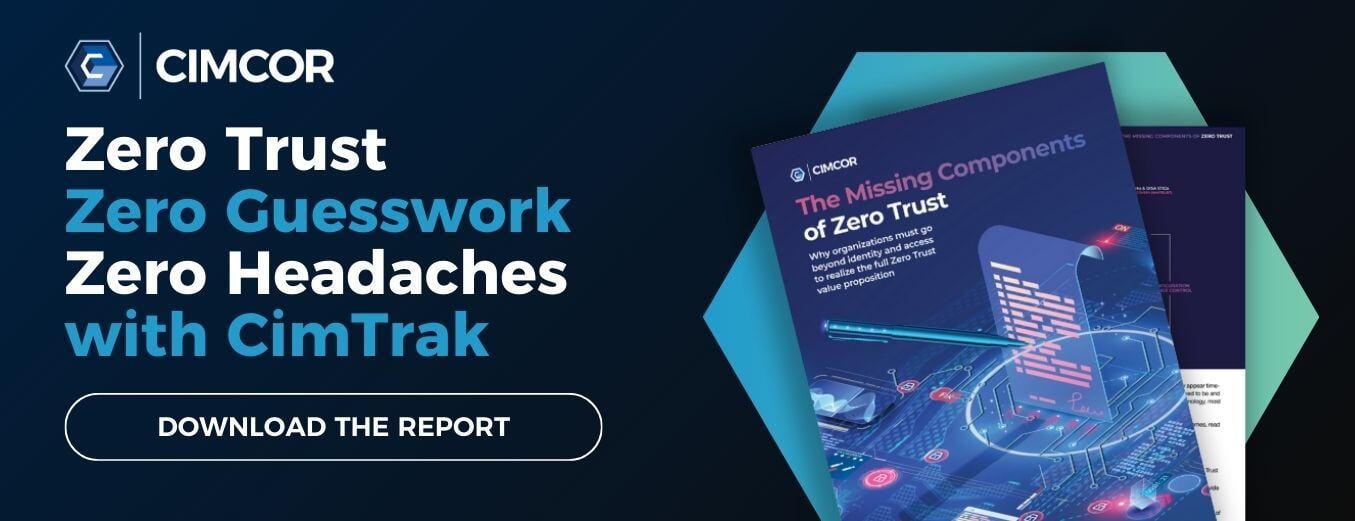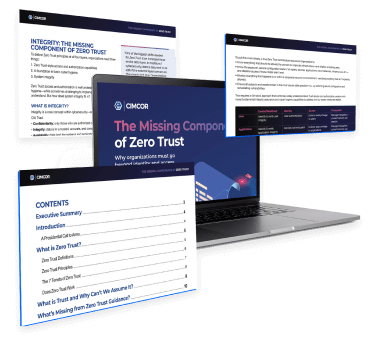Zero Trust has been a buzzword in cybersecurity for nearly a decade now. However, it’s more than just a buzzword: It’s a solid cybersecurity methodology that can transform how your organization manages data access and security.
To understand Zero Trust, you’ll need to understand its foundations. Just like a home’s foundation consists of parts like a slab, steel rods, and anchors, Zero Trust Architecture rests upon seven Zero Trust pillars. These pillars sum up everything Zero Trust seeks to accomplish and outlines how you can use this methodology to achieve your cybersecurity goals.
This post will go over the seven pillars of Zero Trust and how you can apply each to your network for maximum security and effectiveness.
The Seven Zero Trust Pillars: An Overview
Before we examine the seven pillars of zero trust, let’s first look at Zero Trust. A Zero Trust approach to cybersecurity begins with the assumption that a breach is inevitable or has already occurred.
The Zero Trust methodology requires you to verify and validate user identities continuously. You can also use this structure to monitor user activity to search for unusual activity rather than focusing solely on securing your network’s perimeter.
Related: The (Often Ignored) Fundamentals of Zero Trust
The seven Zero Trust pillars discussed here originate from the NIST Special Publication 800-207. This resource provides a detailed walk-through of the components of Zero Trust, how to deploy this strategy, and the threats associated with adopting a Zero Trust Network Architecture.
With this baseline information established, we are now ready to begin our exploration of the seven Zero Trust pillars and how to apply them to your network.
Pillar 1: All data sources and computing services are considered resources
According to this pillar, every device and application used by your organization is considered a resource. You may understand your organization's servers and on-site devices, but do you have cloud-based applications that your employees may access from personal computers or mobile devices?
Under Zero Trust, these personal computers and mobile devices would also be considered resources. This thinking is vital to successfully implementing Zero Trust practices because Zero Trust requires that you continuously verify all users and devices accessing your network.
Related: ANSWERED: How To Implement Zero Trust in Your Organization
Apply this pillar to your efforts by creating clear policies regarding using personal devices for business use in your organization. You may also choose to set up processes to verify both the user and the device during login processes.
Pillar 2: All communication is secured regardless of network location
In the first pillar, we discussed the challenges associated with employees accessing your network from personal devices. However, in Zero Trust, access from an in-network device cannot be trusted automatically, either.
Rather than automatically trusting access from enterprise-owned network devices, you must continuously verify access regardless of network location. To maintain the integrity of your Zero Trust architecture, you must strive to protect system integrity and obtain authentication.
Implementing multi-factor authentication and individual login credentials can help you ensure secure communications within your network.
Pillar 3: Access to individual enterprise resources is granted on a per-session basis
One vital element of Zero Trust is the attitude of least privilege. This element requires you to provide all employees with the minimum system access they need to perform their job duties. This minimum access applies to the applications themselves and the approved times during which an employee may access them.
To apply this pillar, ensure you grant access only to employees who need that access to complete their duties. Access to one resource should not result in automatic access to another. Instead, you should verify access to each resource individually at the time of access.
This continuous authentication makes it more challenging for an attacker to move laterally within your network while simultaneously creating an easy-to-follow audit trail of user activity within your system.
Pillar 4: Access to resources is determined by dynamic policy
To adequately protect your resources, you must set forth clear, dynamic access policies. Zero Trust requires that you authenticate user accounts and devices. You can verify devices using features like software versions, network locations, credentials, and more.
Build your access policy in a manner that analyzes device characteristics in addition to user behavior. Some factors you may want to include in your access policies are:
- Network location
- Time and date of an access request
- Previously observed user or device behavior
- Software versions installed
- Reported active attacks
Implementing robust and dynamic access policies is vital to a strong Zero Trust solution because limiting and monitoring user access and activity is central to the Zero Trust model.
Pillar 5: The enterprise monitors and measures the integrity and security posture of all owned and associated assets
As the name suggests, Zero Trust seeks to remove all inherent trust from your cybersecurity practices. No device or user is inherently trusted under this structure. Additionally, this model requires that you continuously monitor your devices and applications, seeking any necessary patches for vulnerabilities.
You should create robust reporting processes to apply this pillar to your network. These processes should seek to provide you with all the data you need to understand and take steps to correct any vulnerabilities in your network devices or applications.
Pillar 6: All resource authentication and authorization are dynamic and strictly enforced before access is allowed
Zero Trust is not a “set it and forget it” approach to cybersecurity. Instead, pillar six dictates the necessity of dynamic, continuous assessment, adaptation, and evaluation. You will want to implement Identity, Credential, and Access Management (ICAM) systems for asset management.
To apply this pillar to your Zero Trust model, set up processes for reauthentication and reauthorization. Some possible triggers for reauthentication include:
- Time-Based
- Resource Modification
- Additional Resource Request
- Unusual Activity
Pillar 7: The enterprise collects as much information as possible about the current state of assets, network infrastructure, and communications and uses it to improve its security posture
The final pillar of Zero Trust relates to the continuous improvement mindset required of this solution. To utilize Zero Trust effectively, you must constantly collect and compile information regarding your network and its security. You will then use this data to improve your security posture incrementally.
You can apply this pillar to your network by studying data related to network traffic, access requests, and more. Use this data to create and enforce cybersecurity policies in your organization.
Leveraging the Seven Zero Trust Pillars
Understanding the seven Zero Trust pillars is a great starting point to implementing and maintaining a successful Zero Trust Architecture in your business. Zero Trust can be challenging to set up, but the benefits you’ll receive when it is set up correctly are worth any pain you may experience up front.
You may notice that these seven tenets do not prescribe a specific solution-based approach to Zero Trust. This is because there are many possible approaches to delivering a Zero Trust strategy. Your organization should work to develop a strategy and tool stack that meets your unique needs and works with your existing infrastructure.
For organizations looking to implement a file integrity monitoring solution to assist with their Zero Trust efforts, you may want to explore CimTrak. The CimTrak solution provides all the functionality of a standard file integrity monitoring solution, plus features that reduce change noise and more.
Check out an instant preview of our solution today, or learn more about Zero Trust with our free resource, Missing Components of Zero Trust, today.
Tags:
Zero Trust
November 3, 2022




